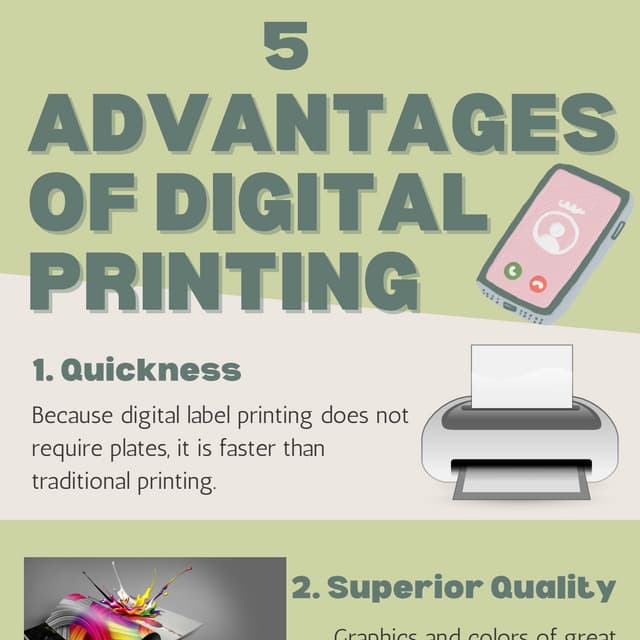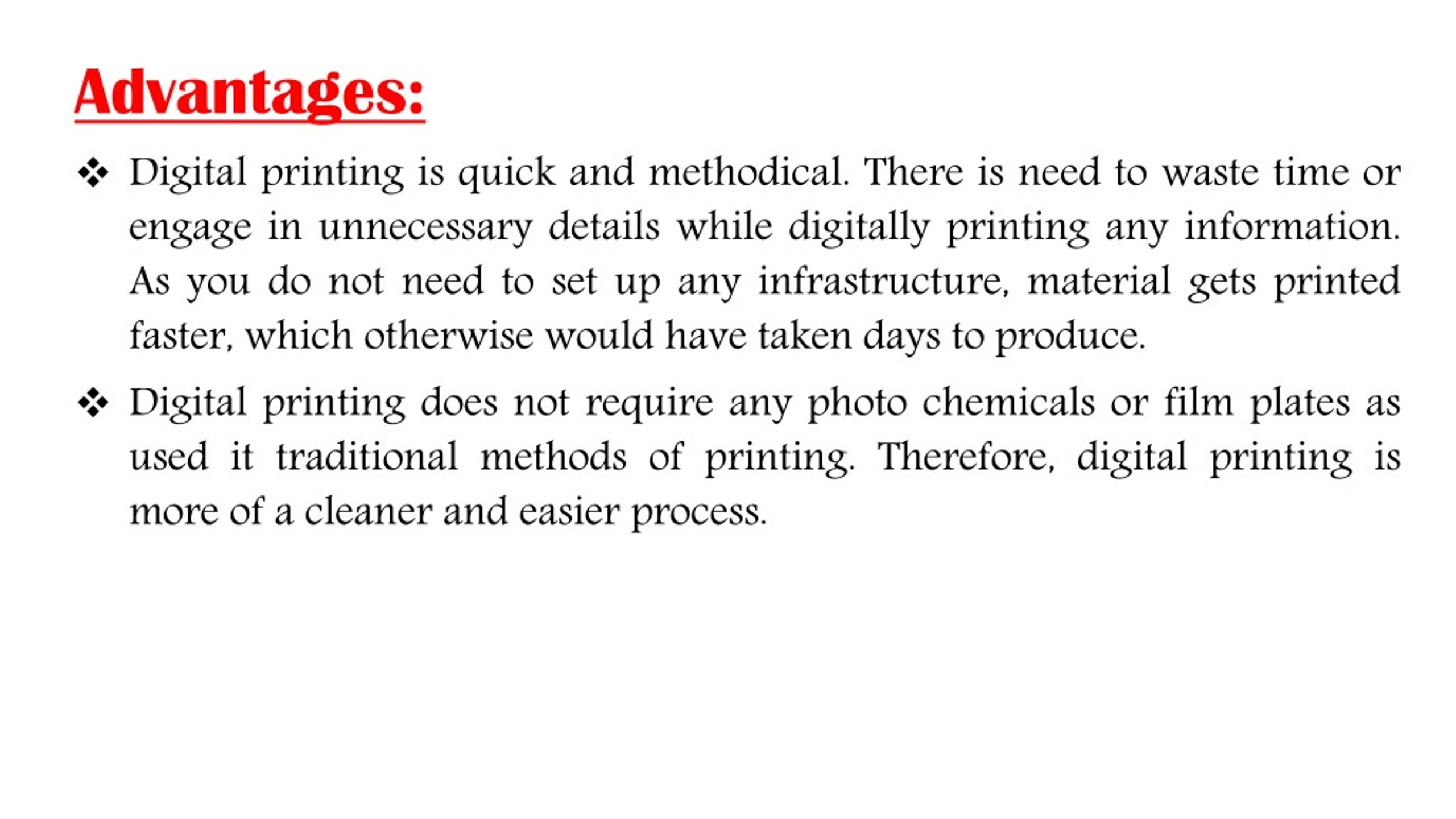A Biased View of Digital Printing
A Biased View of Digital Printing
Blog Article
Digital Printing - The Facts
Table of ContentsExamine This Report about Digital PrintingThings about Digital PrintingDigital Printing Fundamentals ExplainedDigital Printing Things To Know Before You BuyThe Definitive Guide for Digital PrintingThe Of Digital Printing
Variable information printing, such as direct mail with personalized codes and addresses, is preferably fit for electronic printing. Digital fast printing only requires four actions of design, evaluation, printing and binding to obtain everything done. Digital fast printing has an unmatched advantage: print on need.According to PMMI, electronic printing allows brands and makers to react quickly to client needs while boosting the supply chain, decreasing warehousing price and waste, and delighting in faster time to market. That all audios great, however how does this modern technology do all that? The significant differentiator of these innovations is that there are no set up fees and no plates with digital printing.
Facts About Digital Printing Revealed
According to Wikipedia, the greatest distinction between digital printing and standard techniques such as lithography, flexography, gravure, or letterpress - Digital Printing is that there is no need to change printing plates in digital printing, whereas in these analog printing methods home plates are repeatedly replaced. This results in quicker turnaround time and decreases cost when utilizing electronic printing.
Digital printing is extremely adaptable, so it's simple to make changes to the bundle design promptly. It all goes back to the plates.
A lot more inventory can indicate more waste in the future. With traditional printing methods, short-run printing is simply not feasible. Since an excellent style can make or break your item, electronic printing constantly develops top quality, clear and vibrant graphics each time. Digital printing on versatile pouches adds the bright, vibrant, and accurate graphics that virtually bid consumers to reach out and touch them.
Digital printing is the process of printing digital-based photos directly onto a variety of media substrates. There is no demand for a printing plate, unlike with balanced out printing. Digital documents such as PDFs or desktop posting data can be sent out directly to the electronic printing press to publish on paper, image paper, canvas, fabric, synthetics, cardstock and various other substrates.
Digital Printing - An Overview
According to PMMI, digital printing enables brand names and makers to respond quickly to client needs while improving the supply chain, lowering warehousing cost and waste, and enjoying faster time to market. That all noises terrific, but exactly how does this innovation do all that? The major differentiator of these technologies is that there are no set-up fees and no plates with electronic printing.
According to Wikipedia, the best distinction between electronic printing and standard techniques such as lithography, flexography, gravure, or letterpress is that there is no need to change printing plates in electronic printing, whereas in these analog printing methods the plates are consistently changed. This causes quicker turn-around time and reduces cost when making use of digital printing.

The Definitive Guide to Digital Printing
More inventory can mean more waste later on. With traditional printing methods, short-run printing is simply not possible. Since a fantastic layout can make or damage your product, digital printing continually creates premium, clear and colorful graphics each time. Digital printing on adaptable pouches adds the intense, vibrant, and specific graphics that almost beckon consumers to connect and touch them.

According to PMMI, digital printing enables brand names and producers to react quickly to client needs while improving the supply chain, lowering warehousing cost and waste, and appreciating faster time to market. That all sounds terrific, but exactly how does this innovation do all that? The significant differentiator of these technologies is that there are no set-up costs and no plates with electronic printing.
A Biased View of Digital Printing
According to Wikipedia, the best difference between click here to find out more digital printing and traditional methods page such as lithography, flexography, gravure, or letterpress is that there is no need to replace printing plates in digital printing, whereas in these analog printing methods the plates are repeatedly replaced. This leads to quicker turnaround time and lowers cost when using digital printing.
Rapid manufacturing means getting your product to market quicker. It also implies it's much easier and faster to make changes later on, when you transform a recipe, include a SKU, or create seasonal packaging. Digital printing is extremely adaptable, so it's simple to make modifications to the bundle style quickly. It all returns to the plates.

Digital Printing - An Overview
Digital printing is the process of printing digital-based photos directly onto a selection our website of media substratums. There is no requirement for a printing plate, unlike with balanced out printing. Digital data such as PDFs or desktop publishing documents can be sent straight to the electronic printing machine to print theoretically, photo paper, canvas, material, synthetics, cardstock and other substratums.
Report this page